#artiodactyla
Text

A female caribou (Rangifer tarandus) and her calf in Denali National Park, Alaska, USA
by Gregory "Slobirdr" Smith
#reindeer#caribou#juvenile#deer#rangifer tarandus#rangifer#cervidae#artiodactyla#mammalia#chordata#wildlife: alaska#wildlife: usa
190 notes
·
View notes
Text
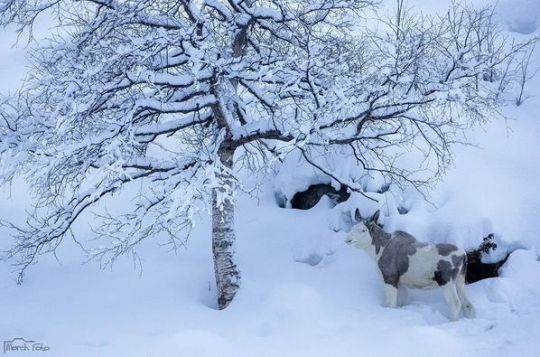

Moose (Alces alces), juvenile, piebald coloration, family Cervidae, eastern Norway
photographed by Thomas Morch
ᴍøʀᴄʜ ғᴏᴛᴏ 🇳🇴 (@m0rch)
5K notes
·
View notes
Photo
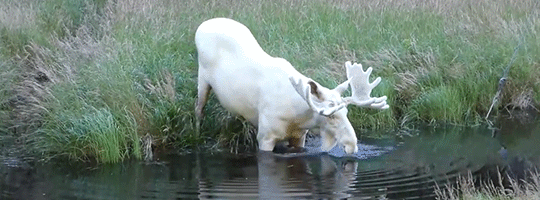
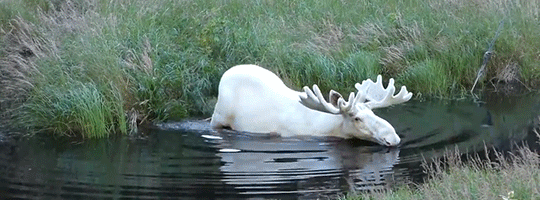
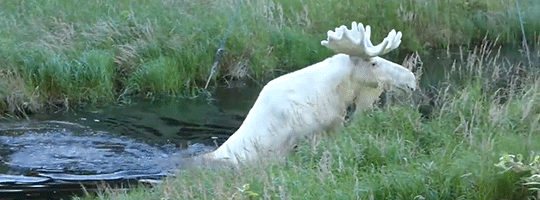
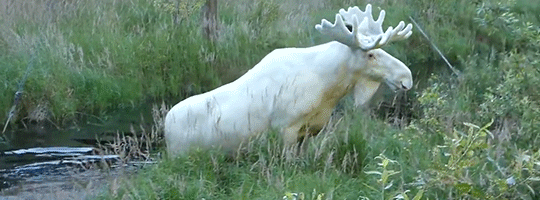
A leucistic moose filmed by municipal councilmember Hans Nilsson in the Värmland region of Sweden (2017)
National Geographic
31K notes
·
View notes
Photo
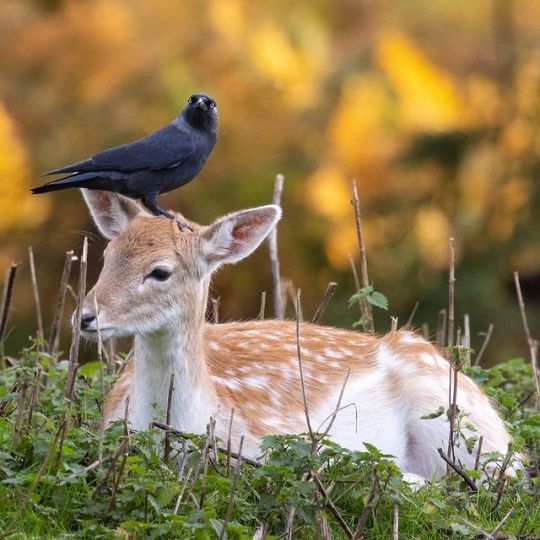
Western Jackdaw & European Fallow Deer
#western jackdaw#jack davison#Coloeus monedula#Passeriformes#Corvidae#Coloeus#bird#european fallow deer#fallow deer#deer#Dama dama#Artiodactyla#Cervidae#Cervinae#Cervini#Dama#upl
4K notes
·
View notes
Text

Green Jay (Cyanocorax luxuosus), family Corvidae, order Passeriformes, sitting on top of a Javelina (Dicotyles tajacu), family Tayassuidae, South, TX, USA
photograph by Steve Hillebrand
U.S. Fish and Wildlife Service
#jay#cyanocorax#covidae#passeriformes#bird#ornithology#javelina#dicotyles#tayassuidae#ungulate#artiodactyla#mammal#animals#nature#north america
503 notes
·
View notes
Text
(Originally posted in this FB group)
That's a heck of a leap; gotta be about, what twenty-five feet or so? Wonder what it would have been with a clean, unimpeded landing? Hope the deer was okay after the adrenaline wore off. Ironically, the person pulling up in the SUV was there to buy the (apparently flawless pre-crash-landing) pickup, and the original post is full of people asking "But did they end up buying the truck anyway?"
#deer#wildlife#white-tailed deer#buck#mammals#animals#nature#ungulates#artiodactyla#irony#isn't it ironic#ecology#video#funny#humor
395 notes
·
View notes
Text
"Wild Yak"
2022

Wild Yak (Bos mutus)
Really underrated bovids. They are really huge, bigger even than African buffaloes, a fact I was reminded of when I saw a video circulating of a wild yak mingling with a herd of domesticated ones, and it towered over them.
#wild yak#yak#bovidae#artiodactyla#animals#animal art#wildlife#wildlife art#realism#photoshop#art#artists on tumblr#mexican artist#autistic artist#dartxo
287 notes
·
View notes
Text
Spectember/Spectober 2023 #10: Tree Goat
An anonymous submitter asked for an "arboreal goat with grasping sloth-like claws":
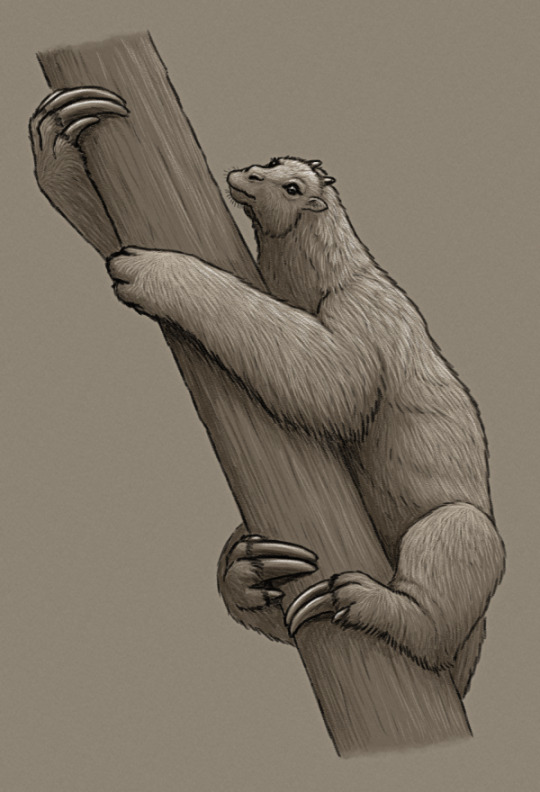
Cluraix cephalula is a distant descendant of feral goats in a tropical forest environment, representing a small tree-climbing offshoot of a specialized chalicothere-like lineage.
About 70cm long (~2'4"), it clambers around in the high tree canopies, with its forward-facing eyes providing good depth perception in this complex three-dimensional habitat. Its long hooked claw-hooves are used both to cling onto branches and to hook-and-pull clumps of foliage towards itself, stripping the leaves with its flexible fleshy lips.
#spectember#spectober#spectember 2023#speculative evolution#goat#artiodactyla#ungulate#mammal#art#science illustration
263 notes
·
View notes
Text
Uncharismatic Fact of the Day
Got milk? The blue whale sure does! Blue whale calves can drink up to 200 L (52 gal) of milk a day, every day for 6-8 months. Due to the milk's high fat content (35-50% fat), these calves gain weight extremely fast-- a single nursing calf can put on 10 lbs an hour!
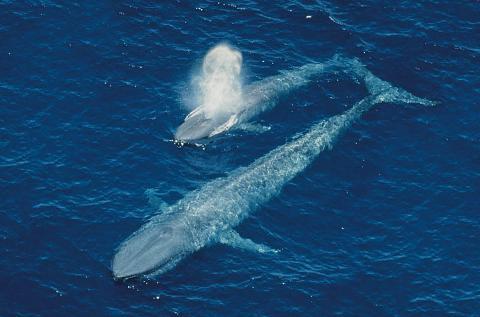
(Image: A mother blue whale (Balaenoptera musculus) and her calf by Whale Watch Western Australia)
#blue whale#Artiodactyla#Balaenopteridae#Rorquals#baleen whales#Cetaceans#whales#artiodactyls#mammals#uncharismatic facts
98 notes
·
View notes
Note
You said earlier that all whales are evolved from a hooved ancestor. Is there any remaining hoovery in modern day whales? Which is to say, do today's whales have any remnants of hooves?
Well, baleen whales are a lot like giant hoovers, vacuuming up vast quantities of krill, but I know that that is not what you meant by 'hoovery'.
No, there are no remnants of hoofs in whales, unlike the fingernails of manatees. The hallmarks of their artiodactyl affinities lie among other features. Important to note that although the group is named after their digits, there are a host of other features that unite them.
122 notes
·
View notes
Text
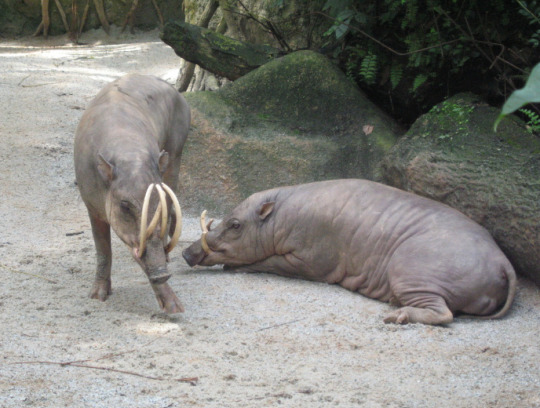
Sulawesi Babirusa (Babyrousa celebensis)
Family: Pig Family (Suidae)
IUCN Conservation Status: Vulnerable
Native to the islands of Sulawesi, Pulau Muna, Butung and Lembeh in Indonesia, the Sulawesi Babirusa is a small, slender, almost entirely hairless species of wild pig best known for the four enormous curled tusks seen in adult males (which are derived from highly elongated canine teeth,) although adult females also possess a single pair of smaller, less elaborate tusks protruding from their lower jaws. The tusks of a male babirusa are used to intimidate rival males and impress potential mates (with females generally preferring males with larger, curlier tusks,) although despite their impressive appearance they are brittle and unsuited for fighting; males generally resolve conflicts through intimidation alone, but if a fight does occur they instead rear up onto their hind legs and strike at each other with their front hooves, similar to a clumsier version of the boxing behaviour of hares. Typically inhabiting dense forests or canebrakes (forest-like areas dominated by tall bamboo of the genus Arundinaria,) members of this species tend to remain near permanent bodies of water such as rivers and large ponds and feed mainly on fallen fruit, although like other pig species they are unspecialised omnivores and will also readily consume leaves, roots and small invertebrates. Female Sulawesi Babirusas live in groups of around 15 adults accompanied by their young, while males are generally solitary outside of the mating season (between January and August). Unlike most pigs females of this species produce only small litters of 1-2 piglets each year, with young being born tuskless and covered in a coat of short, reddish-brown hair.
--------------------------------------------------------------------------
Image Source: https://www.inaturalist.org/taxa/74099-Babyrousa-celebensis
#Sulawesi Babirusa#babirusa#pig#pigs#suidae#zoology#biology#mammalogy#animal#animals#wildlife#Asian wildlife#Indonesian wildlife#ungulates#ungulate#even-toed ungulate#even-toed ungulates#artiodactyla#artiodactyls#wild pig#wild pigs#mammal#mammals
32 notes
·
View notes
Text

An Indian bison or gaur (Bos gaurus) in Satpura Tiger Reserve, India
by Gary Faulkner
#indian bison#gaur#bovines#cattle#bos gaurus#bos#bovidae#artiodactyla#mammalia#chordata#wildlife: india#wildlife: asia
700 notes
·
View notes
Text
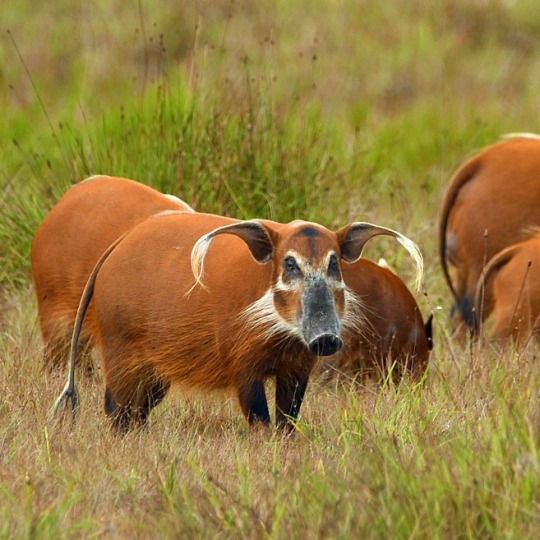
Red River Hog (Potamochoerus porcus), family Suidae, found across much of tropical west-central Africa
photograph by roylesafaris
2K notes
·
View notes
Text

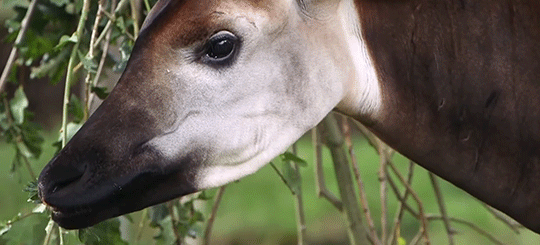

Although the okapi is currently listed as endangered there are programs in zoos across the world dedicated to protecting and breeding them.
©ZSL
1K notes
·
View notes
Photo

American Bison & Common Starling
#american bison#bison#Bison bison#Artiodactyla#Bovidae#Bovinae#Bovina#american buffalo#buffalo#common starling#starling#Sturnus vulgaris#Passeriformes#Sturnidae#Sturnus#bird#upl
170 notes
·
View notes
Text
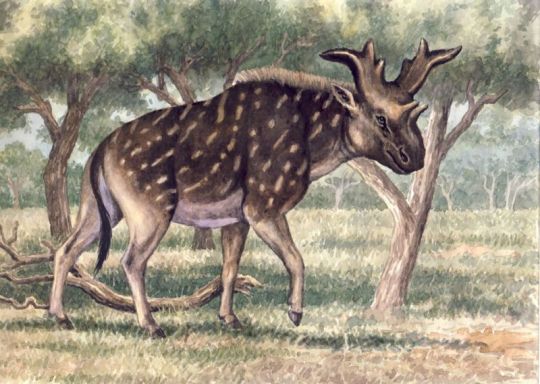
Sivatherium
Sivatherium — вимерлий рід жирафових, що був поширений в пліоцені – верхньому плейстоцені від Африки до Східної Азії (особливо у Індії). Африканський вид, Sivatherium maursium, іноді відносять до роду «Libyatherium». Sivatherium, можливо, вимер не раніше, ніж 8000 років тому, оскільки зображення, які дуже його нагадують, відомі з давніх наскельних малюнків в пустелі Сахара.
Повний текст на сайті "Вимерлий світ":
https://extinctworld.in.ua/sivatherium/
#sivatherium#pliocene#pleistocene#africa#india#artiodactyla#sahara#paleontology#paleoart#prehistoric#animals#illustration#fossils#digital art#extinct#sciart#ua#палеоарт#палеонтологія#ukraine#ukrainian#україна#мова#українська мова#арт#українцівтамблері#article#африка#український tumblr#украрт
24 notes
·
View notes